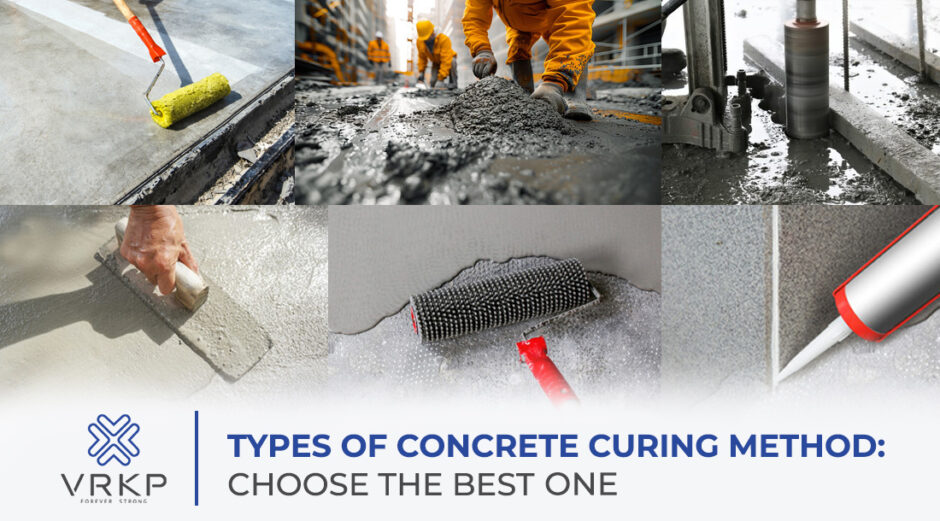Types of Concrete Curing Method: Choose the Best One
Concrete curing – the foolproof technique used for sturdy construction – is like the secret ingredient in a recipe that ensures your building stands strong against the test of time. Just like a chef meticulously follows a recipe to create a masterpiece, mastering the art of curing cement is essential for building durable and resilient structures.
As we delve into the world of concrete curing, let’s uncover the best practices and latest technologies that help construction projects stand the test of time.
Concrete Curing Methods: What is it?
Concrete curing is the process of maintaining the moisture content and temperature of freshly poured concrete to enhance its strength and durability. Essentially, it’s like giving your concrete the spa treatment it deserves!
Here are the three basic types of concrete curing you would want to know.
Water Addition Method
1.Spraying or Fogging
Water is sprayed onto the concrete surface using hoses or sprayers. This method is suitable for most types of construction.
2.Ponding
Small ponds of water are created over the concrete surface by raising temporary barriers. This method is effective for curing horizontal surfaces like roads and slabs.
3.Wet Coverings
Wet coverings such as wet gunny bags, jute matting, or straw are wrapped around vertical surfaces or sawdust, earth, or sand is used as wet coverings for horizontal surfaces to keep the concrete damp.
4.Immersion
Precast concrete items are immersed in curing tanks for a specific duration.
Water Retention Method
Chemical compounds dissolved in solvents are sprayed over the fresh concrete to form a thin film that prevents evaporation. This method is known as the membrane method and is suitable for flat surfaces of single thickness. However, continuous concreting is not possible with this method.
Temperature Control Method
Steam Curing at Ordinary Temperature: Concrete elements are stored in a chamber and subjected to steam. Accelerated hydration takes place, resulting in faster strength development. This method is commonly used for prefabricated concrete elements.
1.Steam Curing at High Temperature and Pressure
Autoclaving is a method of curing concrete, in a closed chamber using super-heated steam at high temperature and pressure. It allows concrete to gain strength in a shorter time and provides higher resistance to sulphate attack and lower drying shrinkage.
2.Curing by Infrared Radiation
In extremely cold climates, curing of concrete can be done using infrared radiation.
3.Electrical Curing
This concrete curing procedure is used in very cold climatic regions and involves the use of electricity for curing concrete, although it is not common due to economic reasons.
How Much Time Does Concrete Curing Take?
Concrete curing is a patient process, typically lasting around 7 days for standard concrete to achieve optimal strength. However, certain advanced technologies can accelerate this timeline without compromising the quality of the concrete.
Curing Concrete: Purpose and Importance
The primary purpose of curing concrete is to prevent cracks, ensure structural integrity, and enhance durability. By maintaining the right conditions during the curing process, you’re setting the foundation for long-lasting and resilient structures.
Why is Concrete Curing Time Important?
While time-bound curing is crucial to prevent delays in construction projects, it is equally important to strike a balance between efficiency and quality. Rushing the curing process can lead to compromised structural integrity, so patience is indeed a virtue here.
Advantages and Disadvantages of Concrete Curing Methods:
Advantages:
Higher strength and durability
Reduced risk of cracking
Enhanced surface finish
Improved resistance to environmental factors
Increased lifespan of the structure
Disadvantages:
Time-consuming process
Additional costs for advanced curing methods
Potential need for specialized equipment
Risk of over or under-curing if not done correctly
Whether it’s a towering skyscraper or a humble residential abode, the key lies in the quality of the materials and the techniques employed during the building process.
To read more insightful blogs visit https://vrkp.in/blog/

